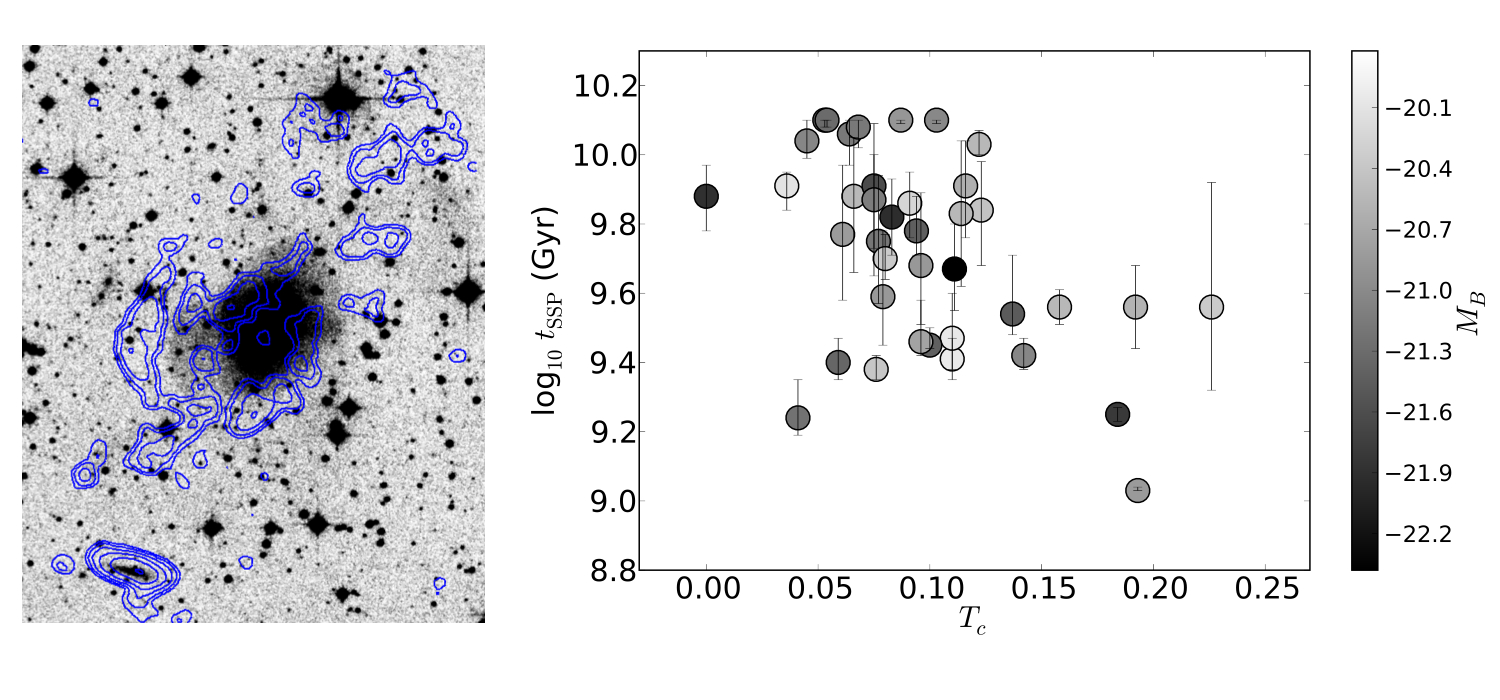Daily Image
16-10-2009The eventful life of elliptical galaxies
| Submitter: | Paolo Serra |
| Description: | An important area of research in astronomy is the formation and evolution of elliptical galaxies. At a first look, these appear as very regular objects, dominated by a smooth bulge of old stars and containing very little gas. These and other properties suggest that elliptical galaxies formed long ago and that their life has been relatively quiet for many billions of years. However, the details of the formation and evolution of these objects are still under debate. One interesting observation comes from deep optical images showing shells, streams and tails of stars around most elliptical galaxies (the so-called "fine structure"). This observation suggests that, with the exception of systems residing in environments with a high density of galaxies, ellipticals are still growing and keep acquiring new stars from the encounter with other galaxies. An important aspect of this process is whether, together with stars, ellipticals also acquire gas. This gas could trigger new episodes of star formation (rejuvenating the stellar populations of ellipticals) and have important effects on the structure and dynamics of the accreting system. Because of this reason, various groups have been trying to understand how much gas accretion occurred during the most recent stages of the life of elliptical galaxies. While some of these groups claim that gas has not played a significant role, ASTRON researchers Paolo Serra and Tom Oosterloo have recently shown observational evidence of the contrary. In their article, Serra and Oosterloo conclude that more than 25% of elliptical galaxies host hundreds of millions of solar masses of neutral hydrogen gas (HI). This gas is nearly always found in unsettled configurations, revealing its recent accretion and confirming that ellipticals are still growing. The image on the left shows an example of such a galaxy, NGC 2865, where the blue contours show lines of constant HI surface density, and the grey image shows the disturbed stellar morphology. The HI is found in tails and streams, convincing evidence of its recent accretion. Another pice of this puzzle is Serra and Oosterloo observation that all ellipticals showing recent accretion of stars from other galaxies have recently formed stars in their centre. Their conclusion is that these systems must have accreted some gas too. The right plot shows the average age of stars in the ellipticals studied by Serra & Oosterloo vs. a parameter proportional to the amount of fine-structure in their optical images. All disturbed galaxies are relatively young, unlike what happens for more relaxed objects. The general conclusion is that elliptical galaxies are still growing and that this process occurs in the presence of cold gas amounting to up to 10% of their stellar mass. For more information see Serra and Oosterloo 2009, MNRAS, in press. |
| Copyright: | Left image of NGC 2865 from Schiminovich et al. 1995, ApJ, 444, L77. Right plot from Serra & Oosterloo 2009, MNRAS, in press |
| Tweet |  |
